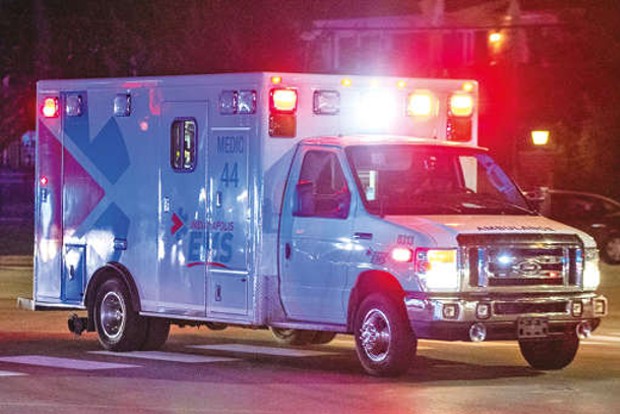Begin typing your search...
Sirens: Ineffective, risky and loud
Emergency drivers are more likely to engage in risky behavior when they use lights and sirens, they say. Also, other drivers sometimes respond in unpredictable ways, such as stopping right in front of an emergency vehicle instead of pulling out of the way.

New York
The barking Dalmatians that once warned pedestrians to clear a path ahead of horse-drawn carriages with firefighting equipment have long since been replaced with ear-piercing sirens that — with their yelps, wails, chirps, whoops and warbles — can sound like an over-caffeinated R2-D2. But for all the noise they create and attention they draw, sirens, combined with emergency lights and speeding, can be a force multiplier for more harm than good, some experts said.
Emergency drivers are more likely to engage in risky behavior when they use lights and sirens, they say. Also, other drivers sometimes respond in unpredictable ways, such as stopping right in front of an emergency vehicle instead of pulling out of the way.
Further, the use of lights and sirens has been shown to have little bearing on patient outcomes. More than a dozen studies have estimated that lights-and-sirens responses shaved 42 seconds to three minutes off the time of a trip to the scene of a call.
When emergency medical responses were evaluated in Salt Lake City in the 1990s, the difference between “hot” calls (lights and sirens on) and “cold” ones (no lights or sirens) amounted to an average of 26 seconds, said Dr. Jeff J. Clawson, founder of the International Academies of Emergency Dispatch in Salt Lake City.
“Most of the things that are time-dependent are a very tiny minority of the E.M.S. calls,” said Dr. Douglas F. Kupas, E.M.S. medical director for Geisinger E.M.S. in central Pennsylvania, noting that such responses are generally critical only in cardiac arrest calls. Yet, the average overall use of lights and sirens in E.M.S. calls nationally from 2010 through 2015 was as high as 77.5 percent, according to a report he wrote.
Sirens can be useful in certain situations, such as getting through red lights or stop signs, but they can be harmful to responders, who can suffer premature hearing loss, and to patients, who can be stressed by the noise.
And then there is the risk of accidents. A study of ambulance crashes by the National Highway Traffic Safety Administration estimated that an average of 4,500 such accidents occurred annually from 1992 to 2011, resulting in an average of 33 deaths and injuries to 2,600 people each year. Dr. Clawson said the overuse of lights and sirens posed a “public health dilemma.” “Killing nuns and children at crosswalks because you are running lights and sirens on a mouse bite doesn’t make any sense,” he said.
The same risks identified in studies about ambulance responses apply generally to police and fire responses as well, though the dispatching criteria and cultures in those public safety disciplines can vary widely, experts said.
In the case of ambulances, some medical services strive to meet response times based on studies from the 1970s, when devices such as automatic defibrillators were not widely available in public settings. Some municipal contracts require private ambulance services to meet outdated response times, incentivising the use of lights and sirens, experts said. In rural areas, it would seem counter-intuitive that ambulance and fire services would need to rely on lights and sirens to get through traffic, but they create an allure that can help in recruiting volunteers, Dr. Clawson said. “Running hot,” he said, is an adrenaline rush and makes the responses seem more exciting.
Newer siren models rely on sound waves that not only can be heard but also can be physically felt. These sirens, known by such names as the Growler, Howler and Rumbler, emit low-frequency sounds that can penetrate and shake solid materials, like rearview mirrors.
Visit news.dtnext.in to explore our interactive epaper!
Download the DT Next app for more exciting features!
Click here for iOS
Click here for Android
Next Story



